At Unitas Global, we are talking to clients about how to prepare for the return to working from headquarter and branch office locations.
How does a company enable its workforce to do their jobs from anywhere? How does an organization ensure their workforce is prepared for only portions of the workforce returning to an office? How does the IT department support some offices opening and others remaining closed with individuals working from home?
For years, organizations have thought about business continuity and disaster recovery from the perspective of fire, flood, or power outage in the office location. While it’s rare for a pandemic to occur, the same strategic thinking is needed to keep business running through such a dynamic situation.
Many enterprises rely on a managed service provider (MSP) to help them maintain business continuity and network security when workforces must relocate and work remotely. MSPs partner with organizations’ IT teams to provide experienced, knowledgeable resources and the comprehensive tools needed to operate and even optimize IT operations.
Security and networking are still immense concerns when employees come back to the office—and for those who continue to work remotely. A fully remote situation presents a much greater security threat and requires authentication and a connectivity solution that is optimized for resiliency and dynamic bandwidth needs.
Many organizations have been re-sizing connectivity from their office building to servers in data centers, or from their Internet to SaaS providers. Unique to a pandemic where 100% of the workforce works remotely, companies need to move data securely between employees at home back to their office and onward from there to cloud resources. Before the shelter in place orders due to COVID-19, many organizations already had work from home policies that allowed for a few employees to work remotely part or full-time. The business continuity measures required when shifting from a few remote employees to all remote employees differ.
Remote employees require security from their homes, but the access they receive to the company data or systems is not all the same. For example, an executive will have a different level of access than a line worker. The right access must be given to the right people for them to do their jobs while minimizing vulnerabilities. And the device by which the user is entering the company network matters. In the office, PCs at user workstations are already in the network and configured with the security features standard for the organization. Company-issued devices like laptops are less of a vulnerability if armed with endpoint protection. But users accessing their work applications from their personal devices can create vulnerabilities for the company network.
How to Mitigate Risks
The risks remote working brings to security and business continuity are plentiful. Where should an enterprise start to overcome them? Whether you have a plan or need to make one, work closely with your cloud managed services provider.
To that end, three things we speak with our customers about are:
-
How are your users accessing your data and applications?
As the current environment has evolved into a long-term remote working situation, a long-term solution for data access by users is required. For ease of use and security, migrating to SaaS applications and virtual desktops may be viable options worth exploring. Virtualizing more infrastructure in a connected hybrid cloud solution will make for a better experience for remote users.
-
What connectivity is available between those users and data?
Data moves everywhere, from servers in data centers to applications to the public cloud to the on-premise office location to remote users, back and forth, and between. Optimal connectivity solutions improve access and performance for users.
-
How are you maintaining security?
Most organizations use antivirus software to protect devices and software. With a distributed workforce, there are additional security options to consider including user device security platforms and mobile management. Why? Because the end-users are not security professionals. They know there are company policies to follow, but they do not always understand the threats or how common habits (such as reusing passwords, keeping a password on a sticky note under the keyboard, etc.) create vulnerabilities.
These are exceptional times. Exceptional times lead to non-traditional scenarios, new questions, and more solutions to consider. Most enterprises can benefit from extra support around security, connectivity, or business continuity options. By engaging a managed service provider, enterprises can leverage expertise and make informed, smart, and timely decisions for the dynamic IT environments that have become the new normal.




